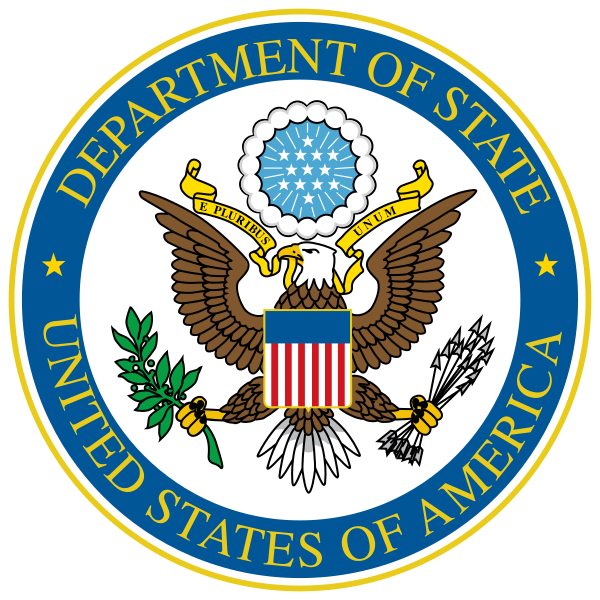Madagascar is a very relatively (and for the region exceptionally) safe nation for tourism, quite viscerally and statistically safer than any African destination on the continental safari circuit, as well as most of Central and South America. Madagascar is even safer than some of Southeast Asia, but it is not as safe for tourists as is the USA or China, Korea, and Japan, nor is it as safe as Mauritius and Reunion nearby.
The road from the capital south to Fort Dauphin is currently not safe in the country, and not very complete nor desirable (3-4 days journey by “road”) either, as there are problems with raiders and bandits. Likewise the river route to Morondava (the Tsiribina river) is problematic due to bandit pastoralists. Lastly, the road to Sambava and SAVA northeast bound from Tana is not secure currently due to many long uninhabited stretches, and vanilla thieves populating the bush on the coattails of the global 500% spike in vanilla prices which has driven theft.
The capital Antananarivo is not safe in Madagascar anymore as of 2018. There are high rates of petty theft, road attacks, drive-by stealing, and light violent muggings all around the city, even occasional armed robbery in the road, on top of extortion by police for cash and opportunistic harassment. At night, most of the city shutters and shudders and the streets become starkly dark and deserted, which wasn’t always the case. Joblessness and economic strife in the capital has resulted in a more anti-foreign and xenophobic vibe in Antananarivo, that at first was directed squarely at French, and later at every Asian, Caucasian, and Indian foreign resident or businessmen. Pickpockets are endemic in Tana and Chinatown, and the main market as well as Ankorandrano is infested with grinding poverty that has bred gangs of street kids and bandit gangs, mostly unarmed.
The Isoraka bar street beginning in Manson and ending in Mojo Bar and Old 7 (Manson, No Comment Bar, what used to be L’Excuse, Bar B, Mojo Bar, and Old 7 Bar has a walking private community security force with orange armbands who police the nightlife strip and patrol the streets outside the clubs at night, however within a few blocks of here, safety problems are high. – Police at the corner of the Sakamanga and the Palm Hotels, and police at the plaza near the Louvre hotel and Colbert stop and ask money from every passing foreigner and vehicle, and maliciously attempt to take you to the police station if you do not have your passport, so they can slowly host and roast you and prepare you for a big payoff using intimidation and bluster, like many police in the capital, acting severe and stage-acting in sober calculation of the racket they are running. These problems will not be around in Antananarivo forever, however private security companies have been doing very well in 2016-2019, and Antananarivo is not safe to walk around at night alone any longer sadly.
Drinking, nightclubs, and prostitution is often very tied to scams that victimize foreigners, as there is a raging and very ugly and visible sex trade for old French men and young Malagasy girls that is rampant in Nosy Be particularly, and so be particularly vigilant around nightlife and dating and keep your common sense and wits if approached, as nearly a third to a half of all cases reported to police involve the cocktail of the above industries in some mix to sting foreign men.
Kidnapping is highly regular in recent years for wealthy resident legacy business families (particularly but not exclusively constrained to cadres of “Karan” or Indian-Malagasy from Gujarat state origin, and usually Shia Muslim-descended merchant class,) with multiple crews and kidnapping gangs extracting sums now, which are continually paid and unabated at around $100,000 or more per ransom. Foreigners and tourists are not targeted in kidnappings, and military professionals from the national military are almost certainly involved in the industry as some of the capture teams, battling out with local police occasionally. There is one entity/group that mainly responsible for the overall orchestration of major political kidnappings which shall here remain nameless, which won’t touch its peer group for fear of reprisals, however smaller gangs of kidnappers have developed as well. The writer of this has personally been involved in kidnapping negotiations in Madagascar and in the security industry at large.
the risk of civil war or gunfire and full scale political insurrection is very scant in Madagascar, and the island does not have the same violent serial sways and historic sagas of uprisings nor regime changes as have plagued Africa since independence, though it has shared or had worse the downwards spiral into poverty and misery that followed.
Madagascar has not been fully involved in all-out war internally or internationally since the Merina and Saklava days following the sailing across the ocean thousands of years ago and the subdivision of the original inhabitants of Madagascar, which are not pertinent to modern times aside from the marked facial features of the population in the capital and highland races. There is a high population or Russian-Malagasy mixed citizens in Antsiranana, in the north of the island (Diego Suarez,) where the Russian Naval base anchored during the Russo-Japanese war, which represents the last time Madagascar was significantly implicated in world conflict. It has remained vaguely remote and detached ever since, flirting with statism and communism during the cold war, and eventually absconding to involuntary isolationism from political wars around the world ever since. In terms of assets nearby, Diego Suarez island and the Seychelles and Kenya all have potent military bases and outposts that assist in defending Madagascar from invasion and have replaced its strategic geographic role for foreign military rental tenants.
Piracy is something Madagascar is world-renowned for in history’s scoreboard. Sainte Marie Island was once an independent pirate nation of opportunistic privateers that prowled the Indian Ocean and whose denizens attacked ships transiting the Mozambique channel or rounding the Cape of Good Hope, and – most of all – ships that were thrown south by missing the crucial eastern currents near the Comoros. Captain Cook and others discovered that the Comoros fulcrum of no return could sweep East and doom ships on a schedule to make the Cape with additional months at sea or ruin them on the rocks…and the Comoros cluster made many altogether lost voyages and cargo.) When this age ended, Sainte Marie (Libertalia) became a “ghost story,” however all of this was real, and the areas north of Sainte Marie still have pirate stories and buried treasure in local folklore. To show how pertinent these Comoros and Indian Ocean sweeping currents were to pirate “ROI” and “business development,” the crashed Malaysian Airlines aircraft pieces were also swept into the same coasts of Madagascar, prompting salvage and crash analyses expeditions by the families of the victims here.
















